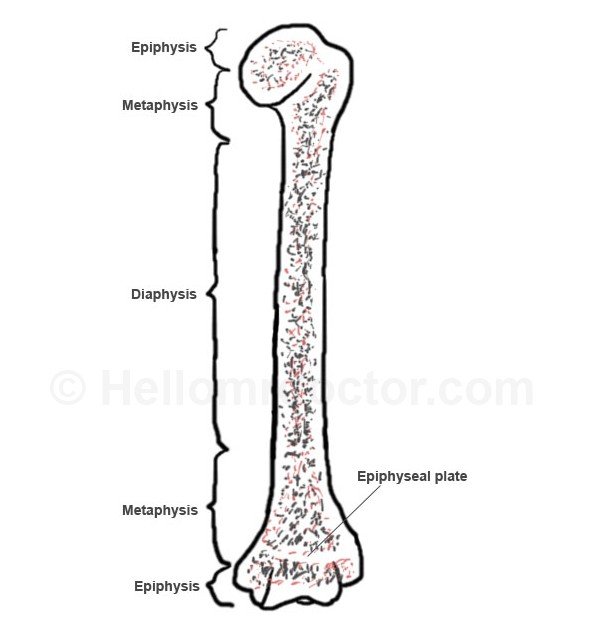Metaphysis
What is Metaphysis?
The metaphysis can be defined as the wide portion of the long bones. This is commonly found between the two ends of a bone, meaning the epiphysis and the diaphysis. Part of the growth plate, the metaphysis develops during the childhood period, its ossification centers being located close to the ends of the bone.
The growth plate contains an epiphyseal component (cartilaginous), a bony component (metaphysis) and a fibrous component (surrounds the peripheral part of the growth plate). In adults, the main function of the metaphysis is to support the load transfer from the joint surfaces that bear weight to the diaphysis. The metaphysis is adjacent to the epiphyseal disk as well, being considered as a transitional zone.
During the period of growth, it is the job of the metaphysis to support the epiphyseal plate (ensuring thus the longitudinal growth). The metaphysis mainly consists of spongiosa, being often presented in adults as the area located near the diaphysis of the long bones.
In children, the long bones is divided into the following segments: diaphysis, metaphysis, physis and epiphysis. The diaphysis is known as the shaft or the primary ossification center, while the metaphysis is presented as the segment where the bone flares. The physis is represented by the bone plate, whereas the epiphysis is the second ossification center. As opposed to children, the long bones of adults present only the diaphysis, metaphysis and epiphysis.
In children, the epiphysis is constituted mainly of cartilaginous tissue (growth cartilage). The physis or the growth plate ensures the longitudinal growth of the bones. While the physis cannot be assessed on the plain radiologic film, its function can be indirectly assessed with the help of the Harris lines. These are normally present at the level of the metaphysis – if the child is healthy and the function of the physis is good, then these lines actually represent the contour of the physis.
Anatomy Pictures of Metaphysis

Metaphysis Picture 1 – Bone Metaphysis and other regions including Epiphysis, Metaphysis, Diaphysis

Metaphysis Picture 2 – Comparison of Adult and Child’s Metaphysis
Clinical significance
The metaphyses of the long bones are characterized by a rich vascular supply, as well as by the vascular stasis. Because of these characteristics, in children, this part of the bone presents a high risk for the hematogenous spread of conditions such as osteomyelitis. It is also possible that the metaphysis is affected by different types of tumors, such as: osteoid osteoma, non-ossifying fibroma, aneurysmal and simple cysts of the bone, fibrous dysplasia, enchondroma, osteoblastoma, fibrosarcoma, chondrosarcoma and osteosarcoma.
Rickets, a condition that is defined by the defective demineralization of the bones, has a negative effect on the metaphyses. In making the diagnosis for this condition, doctors analyze the state of the metaphyses of the long bones. If these presents signs of cupping or fraying, then the diagnosis is most likely rickets.
Pathology
The condition known as “celery stalk metaphysis” is encountered in the situation that the metaphyses of the long bones present linear sclerosis bands. These changes are identified through imaging studies (most commonly – plain radiologic films). The linear sclerosis bands are longitudinally aligned, being encountered in the following medical conditions: congenital infections (congenital rubella, congenital syphilis, and congenital cytomegalovirus) and osteopathia striata.